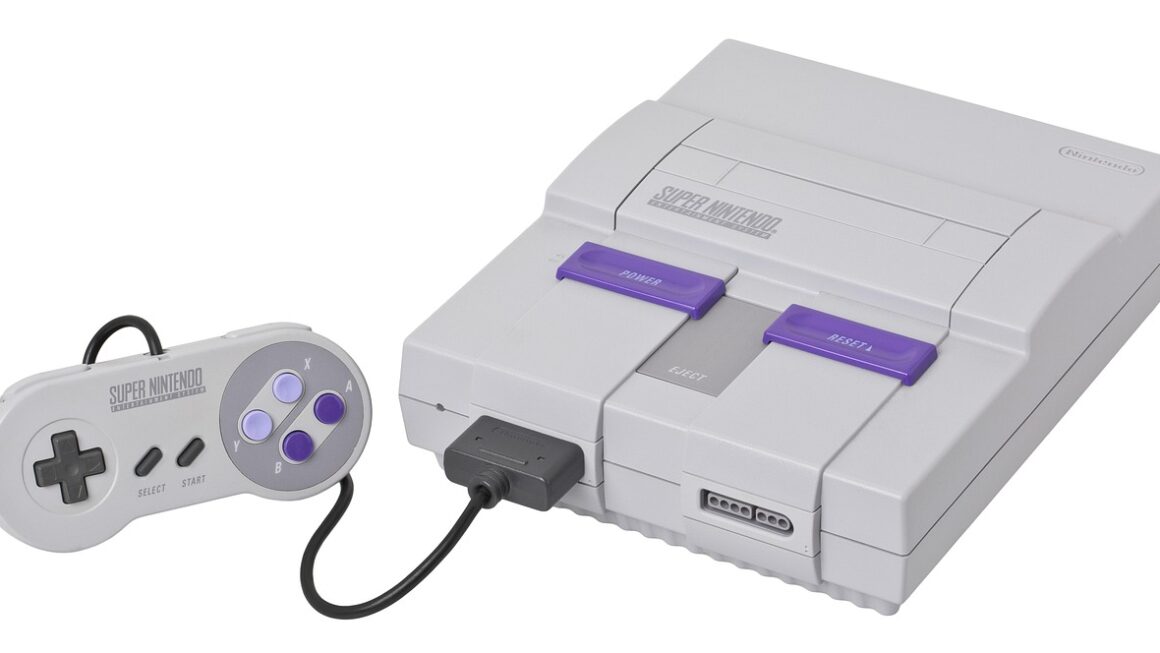First-Person Shooter (FPS) games have dominated the gaming landscape for decades, offering adrenaline-pumping action, strategic gameplay, and immersive experiences. From their humble beginnings to the visually stunning and complex titles we enjoy today, FPS games continue to evolve and captivate players worldwide. This blog post dives deep into the world of FPS games, exploring their history, key elements, popular subgenres, strategies, and the future of the genre.
The Evolution of First-Person Shooters
Early Beginnings: From Maze War to Doom
The journey of FPS games began with simple, experimental titles. The first notable example is arguably Maze War (1974), a rudimentary first-person perspective maze game. However, the true foundation was laid with:
- Wolfenstein 3D (1992): Widely considered the grandfather of modern FPS games, Wolfenstein 3D popularized the fast-paced, run-and-gun gameplay.
- Doom (1993): Doom took the genre to new heights with its intense action, demonic enemies, and groundbreaking multiplayer capabilities. Its impact is undeniable, setting the stage for countless games to follow. Doom introduced features like texture mapping and variable height floors and ceilings, which significantly enhanced the visual experience.
The Golden Age: 1990s and Early 2000s
This era saw an explosion of innovation and creativity within the FPS genre. Games like:
- Quake (1996): Quake introduced fully 3D environments and refined the multiplayer experience, becoming a staple in competitive gaming. Its advanced graphics engine and network code revolutionized the industry.
- GoldenEye 007 (1997): Developed for the Nintendo 64, GoldenEye 007 proved that console FPS games could be just as engaging and immersive as their PC counterparts. It featured innovative stealth elements and a compelling single-player campaign.
- Half-Life (1998): Half-Life redefined storytelling in FPS games with its immersive narrative, seamless integration of gameplay and cutscenes, and unforgettable characters. Its influence can still be seen in modern titles.
- Counter-Strike (2000): A mod for Half-Life, Counter-Strike quickly became a phenomenon, shaping the competitive FPS scene with its tactical gameplay and team-based objectives. It remains one of the most popular FPS games of all time.
- Halo: Combat Evolved (2001): The original Halo redefined console FPS gaming with its engaging story, innovative gameplay mechanics (like regenerating shields), and revolutionary multiplayer.
Modern FPS: Advancements and Innovations
Modern FPS games continue to push the boundaries of technology and game design. Key advancements include:
- Realistic Graphics and Physics: Games like Call of Duty: Modern Warfare and Battlefield series showcase stunning visuals and realistic physics, enhancing the immersion and realism of the gameplay.
- Narrative-Driven Experiences: Games like BioShock and Metro Exodus offer compelling stories, memorable characters, and thought-provoking themes, elevating the FPS genre beyond simple action.
- Live Service Model: Games like Fortnite and Apex Legends have adopted a live service model, offering continuous updates, new content, and evolving gameplay experiences to keep players engaged.
- Esports and Competitive Gaming: FPS games are a major force in esports, with professional leagues, tournaments, and huge prize pools attracting millions of viewers and players.
Key Elements of a Great FPS Game
Core Mechanics: Shooting, Movement, and Combat
At the heart of any great FPS game are its core mechanics, including:
- Shooting Mechanics: Accurate and responsive shooting mechanics are crucial. This includes factors like recoil control, weapon variety, and hit registration.
- Movement: Smooth and fluid movement is essential for navigating environments and engaging in combat. This can include features like sprinting, sliding, and wall running.
- Combat: Engaging combat encounters are key to keeping players invested. This involves factors like enemy AI, level design, and weapon balance.
Level Design: Creating Engaging Environments
Level design plays a vital role in shaping the gameplay experience. Key aspects include:
- Variety: Diverse environments and level layouts can prevent gameplay from becoming repetitive.
- Strategic Points: Well-placed cover, chokepoints, and vantage points can encourage strategic gameplay.
- Verticality: Incorporating vertical elements can add another layer of complexity to combat encounters.
- Environmental Storytelling: Using the environment to convey the narrative and lore can enhance immersion.
Multiplayer Features: Competitive and Cooperative
Multiplayer features are a crucial aspect of many FPS games, offering both competitive and cooperative experiences.
- Competitive Modes: Popular competitive modes include Team Deathmatch, Capture the Flag, and Search and Destroy.
- Cooperative Modes: Cooperative modes allow players to team up and tackle challenging missions or hordes of enemies together. Examples include horde modes and story-driven campaigns.
- Progression Systems: Leveling up, unlocking new weapons and equipment, and earning cosmetic rewards can provide a sense of progression and keep players engaged.
Popular FPS Subgenres
Tactical Shooters: Strategy and Realism
Tactical shooters emphasize realism, strategy, and teamwork. Examples include:
- Rainbow Six Siege: Known for its strategic gameplay, destructible environments, and emphasis on communication and coordination.
- Counter-Strike: Global Offensive (CS:GO): A highly competitive tactical shooter that requires precise aim, strategic thinking, and teamwork.
- Squad: A large-scale tactical shooter that emphasizes communication, teamwork, and realistic combat scenarios.
Arena Shooters: Fast-Paced Action
Arena shooters focus on fast-paced action, skill-based gameplay, and competitive multiplayer. Examples include:
- Quake Champions: A modern take on the classic arena shooter, featuring fast-paced movement, powerful weapons, and unique champion abilities.
- Unreal Tournament: Known for its high skill ceiling and intense, competitive multiplayer matches.
Hero Shooters: Unique Characters and Abilities
Hero shooters combine FPS gameplay with unique characters, abilities, and team-based objectives. Examples include:
- Overwatch 2: Features a diverse cast of heroes with unique abilities and roles, emphasizing teamwork and strategic coordination.
- Apex Legends: A battle royale hero shooter with a focus on movement, teamwork, and strategic use of abilities.
Battle Royale: Last One Standing
Battle Royale games pit players against each other in a large-scale arena, with the goal of being the last one standing. Examples include:
- Fortnite: A highly popular battle royale game with a focus on building, crafting, and fast-paced action.
- PlayerUnknown’s Battlegrounds (PUBG): A more realistic battle royale game that emphasizes tactical gameplay and strategic decision-making.
- Call of Duty: Warzone: A large-scale battle royale game with a focus on fast-paced action, vehicles, and unique game modes.
Improving Your FPS Gameplay
Aim Training and Muscle Memory
Improving your aim is crucial for success in FPS games. Practice drills include:
- Target Tracking: Practice tracking moving targets with your crosshair.
- Flick Shots: Practice quickly snapping your crosshair to a target and firing.
- Headshot Drills: Focus on aiming for headshots, which typically deal more damage.
Utilize aim training software like Aim Lab or KovaaK’s FPS Aim Trainer to improve your skills.
Mastering Movement and Positioning
Effective movement and positioning can give you a significant advantage in combat. Tips include:
- Strafe Jumping: Use strafe jumping to move quickly and unpredictably.
- Peeking Corners: Peek around corners to gather information and avoid being caught off guard.
- Utilizing Cover: Use cover to protect yourself from enemy fire and reposition strategically.
- Map Knowledge: Learning the layout of maps, including key locations, chokepoints, and flanking routes.
Understanding Weapon Mechanics
Each weapon in an FPS game has its own unique characteristics and mechanics. Understanding these differences can help you choose the right weapon for the situation.
- Recoil Control: Learn to control the recoil of different weapons to maintain accuracy.
- Weapon Range: Choose weapons that are effective at different ranges, such as shotguns for close-quarters combat and sniper rifles for long-range engagements.
- Reload Times: Be aware of the reload times of your weapons and plan your engagements accordingly.
- Attachment Optimization: Understand how different attachments affect weapon performance and customize your loadout to suit your playstyle.
Conclusion
FPS games have come a long way since their humble beginnings, evolving into a diverse and dynamic genre that continues to captivate players worldwide. From tactical shooters to arena shooters and battle royale games, there’s an FPS subgenre to suit every playstyle. By understanding the key elements of a great FPS game, mastering core mechanics, and continuously practicing and improving, you can enhance your gameplay and enjoy the thrill of competition. The future of FPS games looks bright, with ongoing innovations in graphics, gameplay, and storytelling promising even more immersive and engaging experiences.



